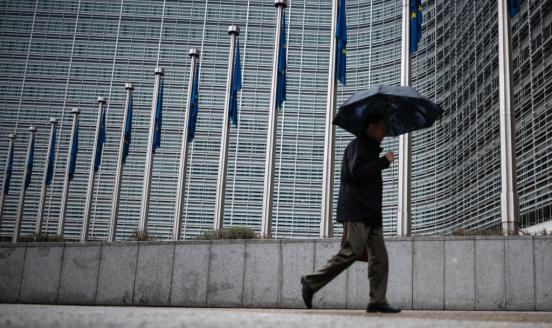European capital markets union, by rule and by choice
While the euro is now a leading global currency and the European Central Bank has become a comprehensive banking supervisor, Europe’s markets have bee
Europeans in the 21st century are used to freely living, working and spending money across borders. But when it comes to banking and investing, their main options are strictly close to home.
Despite adopting a common currency and common banking supervision, the 19 countries that make up the euro area have made little progress in joining up their capital markets. For the rest of the European Union, currency differences add to the cross-border barriers. This limits where businesses can seek loans, and where venture capital investors can find new projects to back. It also prevents already cautious savers from pulling money out of their bank accounts and putting it to work.
The “capital markets union” is touted as the way around the current system of bureaucratic, legal and cultural roadblocks. On paper, it seems like the perfect complement to monetary union and banking union. In reality, it’s more of a slogan than a policy strategy. While the euro is now a leading global currency and the European Central Bank has become a comprehensive banking supervisor, Europe’s markets have been treading water. The International Monetary Fund has found that cross-border capital flows barely budged between 2001 and 2017, apart from some equity trading.
This isn’t for lack of trying. The European Commission rolled out an action plan in September 2015 to try to get the ball rolling. This followed the previous year’s effort to jumpstart European investment with the “Juncker plan” of project subsidies. Policymakers know that you can’t seek money from markets that don’t really exist. Bank loans provide the lion’s share of European financing, in contrast to the U.S. where capital markets do the heavy lifting. The modest measures enacted so far haven’t done the job. While guarantees and loss protection programmes can bring some investors off the sidelines, more comprehensive changes are needed.
Finishing the euro-area banking union would be a big step forward. This requires comprehensive deposit insurance across Europe, so that consumers know that a euro invested in one bank is as safe as any other, regardless of what kind of national safety net their home country can muster. Right now, deposit backstops remain tied to national balance sheets, hurting market confidence and creating a regulatory impasse. Once the euro area breaks that link, it will be able to strengthen regulation and protect household finances to much better effect.
Market oversight is another key element. Non-bank financial players can be worthy complements to the formal banking system, but they must be properly supervised. The European Securities and Markets Authority currently lacks the independence and clout necessary to keep a strong watch over financial market infrastructure. The EU is working on ways to regulate shadow banks and protect against money laundering and other financial market threats, but there remains a long way to go.
A stronger supervisor would be a big step toward creating the necessary infrastructure for further integration. Europe also lacks a widely traded reference asset such as the U.S. Treasury bond. Treasury debt, created by large-scale U.S. government borrowing, is the backbone of the deepest and most liquid securities market in the world. As long as the EU is resistant to public borrowing generally and to joint borrowing in particular, there won’t be a European equivalent.
Investors looking to do business across the EU must navigate a sea of different legal jurisdictions and bankruptcy rules. Changes in this area are hard to coordinate and happen outside normal banking policy channels, so any action would need the attention of policymakers who don’t normally manage economic concerns. Europe would benefit from a targeted set of measures, crafted with both the financial sector and national legal systems in mind.
Finally, even if the rules were adjusted overnight, Europe would still need to address its financial culture. In many of the EU’s wealthiest countries, risk-free savings are prized over financial investments with exposure to even the smallest amount of unpredictable loss. The ECB’s unconventional monetary policy tools mean that many of these savers are accepting losses from negative interest rates to keep their money close at hand, rather than venturing forth into the market unknown.
One way to move forward might be to develop a voluntary approach to capital markets readiness, to inform local rulemaking during the long years of the EU policy process. The European Commission could develop a “best practices” suite of financial education, consumer protection and market standardization guidelines. This way, countries and regions could follow a checklist of measures that, if put in place, might spur more long-term investment before a permanent, comprehensive framework can be put in place.
Europe’s capital markets need to be safe as well as sturdy to provide the economic support the continent needs. The EU needs to keep moving forward, so it doesn’t get left behind.




